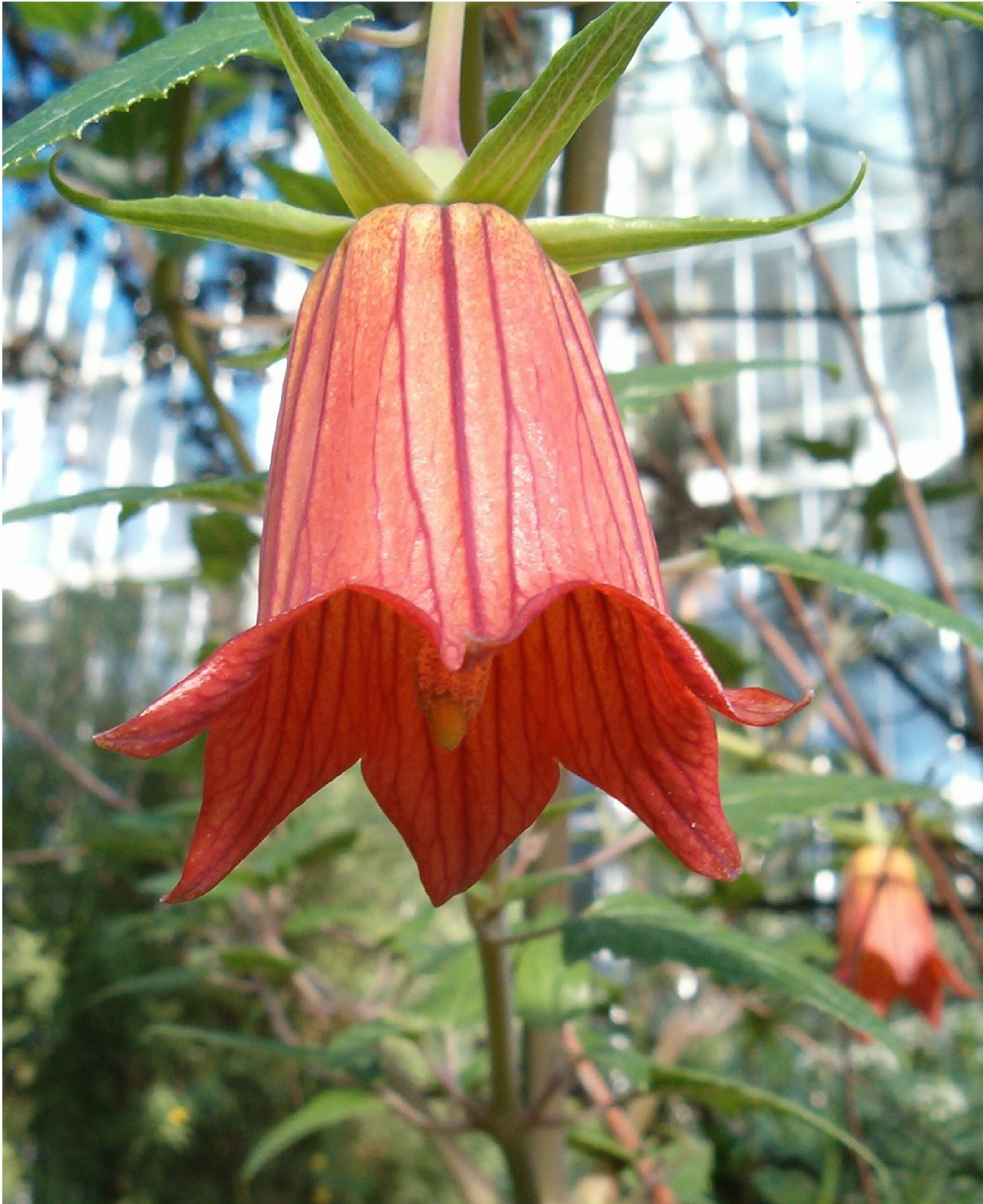- Canarina
Taxobox
name = "Canarina"

image_width = 240px
image_caption = "Canarina canariensis" Canary Island Bellflower
regnum =Plant ae
divisio = Magnoliophyta
classis =Magnoliopsida
ordo =Asterales
familia =Campanulaceae
genus = "Canarina"
genus_authority = L.
subdivision_ranks = Species
subdivision = see text"Canarina" is a
genus offlowering plants within the familyCampanulaceae . The best known species is C. canariensis from thelaurel forest s of theCanary Islands which is sometimes grown as an ornamental plant. "Canarina canariensis" is one of a group of unrelated Canarian plants that appear to be adapted forbird pollination , including the members of the genera "Isoplexis " and "Lotus ". It was once thought that the original pollinators of these plants weresunbirds which had become extinct on the Canary Islands, explaining why some of these species are rare and considered endangered (Vogel 1954; Vogel et al. 1984; Olesen 1985; Valido et al. 2004). However more recent work has shown that these plants are adequately pollinated by non-specialist flower visiting birds, particularly the Canary Islandchiffchaff ("Phylloscopus canariensis") and the Canary Island Spectacled Warbler ("Sylvia conspicillata orbitalis") (Olesen 1985; Ollerton et al. 2008), and in fact show some specific adaptations to infrequent pollination by these birds, such as extended flower lifespans (Ollerton et al. 2008), and a hexose-dominated sugar ratio of the nectar (Dupont et al. 2004).Species include:
*"Canarina abyssinica " Engl., which is native toEthiopia
*"Canarina canariensis " (L.) Vatke (Canary Island Bellflower) which is native to theCanary Islands
*"Canarina eminii " Asch. ex Schweinf., which is native to tropical areas inEast Africa .References
* [http://www.ars-grin.gov/cgi-bin/npgs/html/genus.pl?2023 USDA Germplasm Resources Information Network (GRIN): "Canarina"]
*Dupont, YL, Hansen, DM, Rasmussen, JT & Olesen, JM (2004) Evolutionary changes in nectar sugar composition associated with switches between bird and insect pollination: the Canarian bird-flower element revisited. Functional Ecology 18: 670-676.
*Olesen, JM (1985) The Macaronesian bird-flower element and its relation to bird and bee opportunists.
*Ollerton J, Cranmer L, Stelzer R, Sullivan S, Chittka L (2008) Bird pollination of Canary Island endemic plants. Nature Precedings
*Valido A, Dupont YL, Olesen JM (2004) Bird-flower interactions in the Macaronesian islands. Journal of Biogeography 31: 1945-1953
*Vogel S (1954) Blütenbiologische Typen als Elemente der Sippengliederung. Botanische Studien (Jena) 1:1-338
*Vogel S, Westerkamp C, Thiel B, Gessner K (1984) Ornithophilie auf den Canarischen Inseln. Plant Systematics and Evolution 146:225-248
Wikimedia Foundation. 2010.
